Many Utah patients obtain insurance coverage for transcranial magnetic stimulation (TMS) when medical-necessity criteria are met; total out-of-pocket costs depend on per-session fees, number of sessions (often 20–36), evaluation/motor-threshold mapping, deductibles, and coinsurance. Request a written, line-item estimate and a benefits verification before you start [2].
Key takeaways
- Coverage & eligibility: Many plans cover TMS for treatment-resistant depression (TRD) with prior authorization. Expect criteria like failed medication/therapy trials and no contraindications.
- Cost drivers: Per-session fee × session count (20–36 typical) + evaluation/mapping + taper/maintenance if recommended.
- Protocol & time: Standard sessions ~20–40 minutes; iTBS protocols are minutes long and may affect pricing/throughput.
What Is TMS Therapy?
TMS uses focused magnetic pulses over targeted brain areas (often the left dorsolateral prefrontal cortex) to modulate circuits implicated in depression and related conditions. It’s noninvasive, clinic-based, and typically delivered daily on weekdays for several weeks [1] [2].
TMS Therapy Cost: Key Drivers in Utah
Initial Evaluation & Motor Threshold Mapping
Your course begins with a clinical evaluation and motor-threshold (MT) mapping to individualize dose and coil placement. Clinics often bill mapping separately [2] [3].
Per-Session Fees & Number of Sessions (20–36 typical)
Standard acute courses commonly run five sessions/week for 4–6+ weeks (20–36 visits), followed by a taper. Total cost = per-session fee × visits + evaluation/mapping + any maintenance sessions [3] [4].
Protocol Type (standard, theta-burst, maintenance)
Intermittent theta-burst stimulation (iTBS) shortens chair time and may influence clinic pricing and scheduling. Maintenance schedules (if recommended) add periodic visits after the acute response.
Facility, Device & Clinician Expertise
Board-certified oversight, device model, outcomes tracking, and care coordination can influence fees and value. Transparent, line-item estimates are a plus.
Insurance Coverage, Deductibles & Prior Authorization
Many insurers cover TMS for TRD when the criteria are met. Your out-of-pocket depends on deductible, co-pay/coinsurance, and authorization. Typical criteria include major depressive disorder diagnosis, prior adequate antidepressant trials (often multiple classes) ± psychotherapy, and no contraindications (e.g., cranial implants).
Clinics often submit documentation and may provide a benefits check. Ask for a written estimate covering mapping, per-session fees, total visits, and expected patient responsibility.
Provide your insurance details so staff can confirm coverage, timelines, and any prerequisites (e.g.,medication trials, therapy notes) [4].
Typical Course Length & Visit Schedule
Acute Phase (daily weekday sessions)
Expect Monday–Friday sessions for 4–6+ weeks. Each visit includes a brief setup, safety checks, and stimulation. iTBS sessions are faster; standard protocols run longer [2] [3].
Taper Phase & Maintenance Options
Some clinics taper for 2–3 weeks; maintenance (e.g., weekly to monthly) is individualized if symptoms recur. Coverage varies. [2] [3].
How Does TMS Work? Is it Safe and Effective?
Rapid magnetic pulses induce small electrical currents that modulate cortical excitability and network connectivity. Randomized trials and real-world data support TMS for TRD, with response/remission exceeding typical results in many studies. Individual results vary [8].
TMS is safe, pain-free, and most effects are mild (headache, scalp discomfort). Clinics screen for seizure risk, metal implants, and medication interactions. Most also provide ear protection, such as headphones, to increase comfort [2] [3].
What to Expect at Your First Visit
Eligibility Screening & Contraindications
Your team will review diagnosis, prior treatments, medical/surgical history, metal implants, seizure risk, and pregnancy [2] [3].
In-Chair Experience & Session Length
You’ll sit upright; the coil rests against your scalp; you’ll hear clicking and feel tapping. iTBS lasts minutes; standard sessions ~20–40 minutes.
Tracking Symptoms & Function (PHQ-9, GAD-7)
Routine scales help quantify progress and guide plan adjustments; keep a simple mood/sleep/activity log between visits.
TMS Costs & Insurance in Utah: Quick Answers
How many sessions are typical?
Often 20–36 acute sessions on weekdays, plus taper if recommended.
Is mapping billed separately?
Usually, yes—ask for evaluation and MT mapping as separate line items.
Do most insurers cover TMS for TRD?
Many do with prior authorization and documented criteria; confirm your plan specifics.
What if I’m paying cash?
Request per-session and total-course ranges (including evaluation/mapping and taper/maintenance) and ask if iTBS affects cost.
Are maintenance sessions covered?
Varies by plan and diagnosis; some require new authorization or documented relapse.
Next Steps: Schedule a Consultation with Harper Clinic TMS Therapists
Harper Clinic is a state-of-the-art functional medicine clinic in Utah, providing innovative, evidence-based care for treatment-resistant mental health challenges. Our consultation team is happy to evaluate you to see if you meet the criteria for TMS therapy and help you move forward on your healing journey. Speak with a clinician to review candidacy, verify insurance, and schedule treatment.
Mini Glossary
Motor Threshold (MT)
The individualized stimulation level where a brief pulse produces a minimal motor response; used to set the treatment dose.
iTBS (Intermittent Theta-Burst Stimulation)
A patterned, time-efficient TMS protocol delivering bursts at theta frequency; similar efficacy in some studies with shorter sessions [9].
PHQ-9 / GAD-7
Brief patient-reported questionnaires tracking depressive and anxiety symptoms over time.

Sources
- University of Utah Health HMHI. Transcranial magnetic stimulation (TMS). https://healthcare.utah.edu/hmhi/treatments/transcranial-magnetic-stimulation
- Mayo Clinic. Transcranial magnetic stimulation. https://www.mayoclinic.org/tests-procedures/transcranial-magnetic-stimulation/about/pac-20384625
- Cleveland Clinic. Transcranial magnetic stimulation (TMS). https://my.clevelandclinic.org/health/treatments/17827-transcranial-magnetic-stimulation-tms
- Yale Medicine. Transcranial magnetic stimulation (TMS): What you need to know. https://www.yalemedicine.org/
- Wilkinson ST, Sanacora G. Considerations on the off-label use of ketamine for TRD. World Psychiatry. https://pmc.ncbi.nlm.nih.gov/articles/PMC9193572/
- Philip NS, Carpenter LL. Neuromodulation for PTSD: A review of TMS evidence. Depression & Anxiety. https://pmc.ncbi.nlm.nih.gov/articles/PMC8558793/
- Anxiety & Depression Association of America (ADAA). TMS info and provider finder. https://adaa.org/
- George MS, Post RM. Daily left prefrontal TMS therapy for major depressive disorder. Am J Psychiatry. https://pmc.ncbi.nlm.nih.gov/articles/PMC2993526/
- Cash RFH, et al. Theta-burst TMS for depression: Mechanisms and clinical data. Biol Psychiatry. (Abstract) https://www.sciencedirect.com/science/article/abs/pii/S0006322324013908









